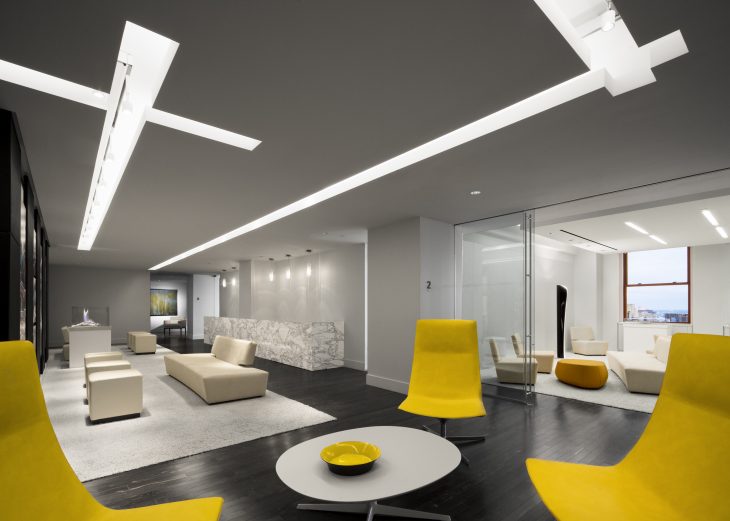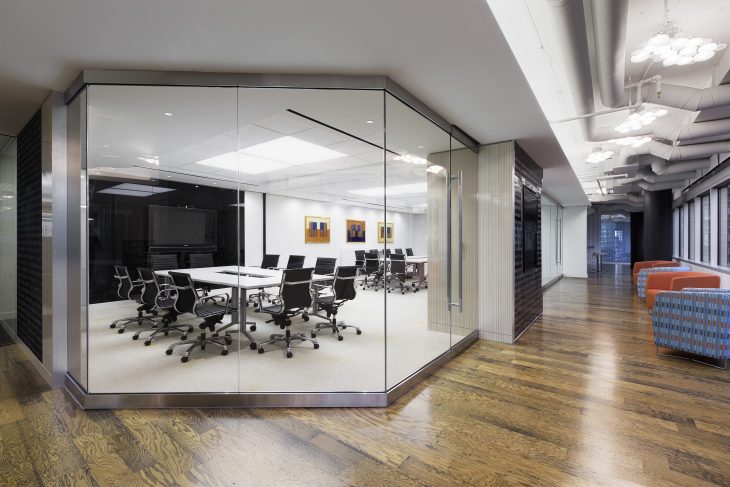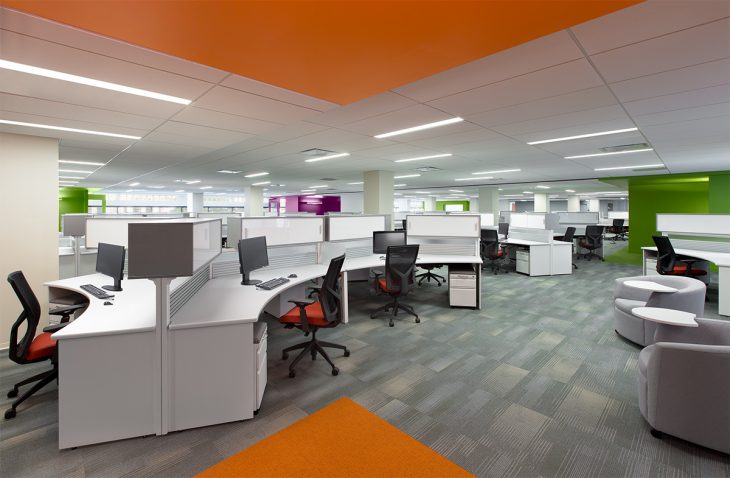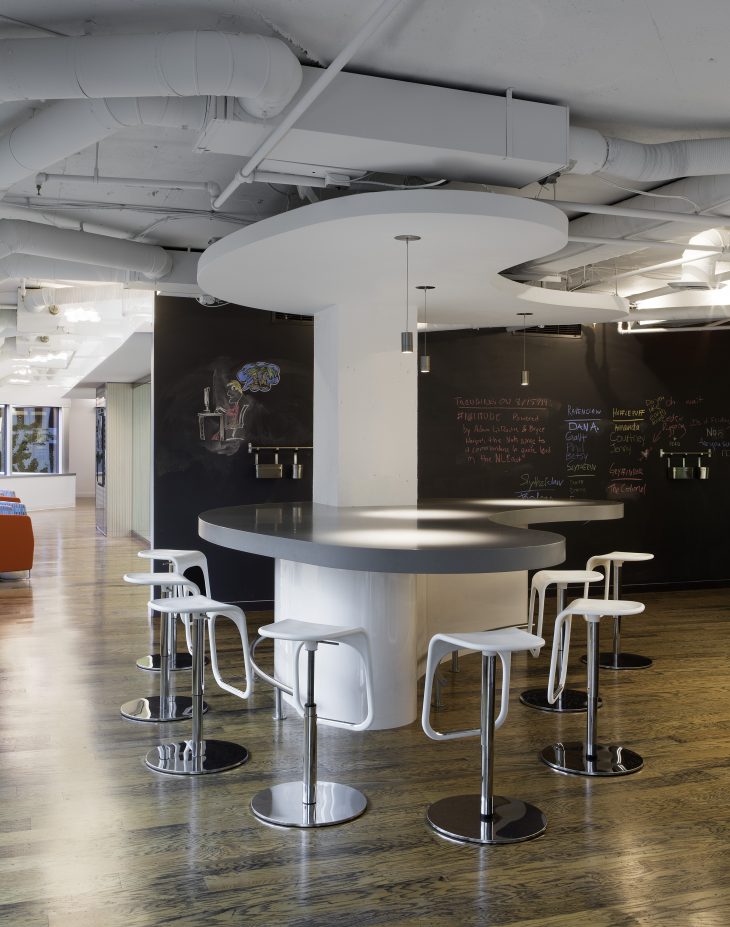The kindergarten theory comes into “play” when the space in which you spend your time in – whether as a kid or an adult – is directly associated with the activity.

Since the early years of the 20th Century up to today, the workplace has evolved from closed private offices to a sea of lined up desks back to individual office; to cubicles to communal places of work. The one thing that is consistent is that we are always looking for the next great idea to make our workplaces enhance creativity; avoid isolation and individual thoughts and build a collaborative team to achieve the mission of the place you work.
Today’s employee is more diverse in race, gender, sexual preference, culture, and age, which includes generations from Baby Boomers, Gen X workers, Millennials, and now Gen Z. With all multiplicity of these individual traits it becomes a challenge for management to provide the appropriate space for their employees to thrive, be productive and continue to want to do their best work. Face it: we all look for the yearly list of “Great Places to Work” with hopes to see our company on the list. We recognize that those who are on the list are not often about high salaries but about the workplace, the “tools” given to them to do their job, and the people they work with and for. One of the top values for employees, believe it or not, is to have a structured workplace that is easy to navigate and orient yourself and is encourages creativity. The debate on how the workplace should look in order to benefit business has inevitably changed amongst management over the years.

Regardless, it is understanding and catering to those most basic needs of individuals that ultimately drives productivity for specific tasks or activities within the workplace. Those human emotions and experiences are developed by how we interact with each other at work. Having concentration time; the ability to collaborate with a team to achieve a common goal; being inspired to be creative; have your mind and body nourished and an awareness that wellness supports all of the previous. Employees need private spaces that minimize distraction and allow them to focus on their concentrated thoughts. They need collaborative areas, where they can work on tasks and engage in activities together. Every employee wants to produce and do well and have pride in their individual work, and as a team the workplace has to provide a tool for them to express creativity in a productive manner. Once thought of as amenities, the social and “take a break” function is now not just a nice perk but a vital part of the nourishing of the mind and body but the overall physical and mental wellness of the team. So the design of the workplace becomes a daunting challenge for management because it all stems on whether you have to wonder whether these traits are must-haves to attract and retain staff and, if so, why? When going through the design process, balancing function with the latest fads will determine whether or not you create a successful working environment.
My inspiration for designing workplace environments begins with those basic human experiences and developed when studying our earliest life experiences of being flexible yet organized, but most importantly being productive. I began to identify how we can incorporate those early instinctive behaviors into today’s workplace design strategies and looked no farther than our very earliest group activity – kindergarten. This comparison first came to me when I was visiting friends in Germany. I was picking up their son from kindergarten and it was here that I observed the ways that kids interact with each other, how they used the space, and how it changed throughout the day for different activities. I walked away with the revelation that a kindergarten space strategy and layout is not that different from how adults use a productive workplace. In the past, office design was developed by utilizing corporate interior standards established based on individual entitlement or position, instead of focusing on the task, function and the occupant’s use of that space. This is where the kindergarten theory comes into “play”– the space in which you spend your time in – whether as a kid or an adult – is directly associated with the activity. Adjacencies and the location of spaces are to be convenient and intuitive to the function and be a sequence of the daily activities. So how do we design our workplaces to mirror the classrooms of our younger years?

“Let’s Get Together” – Integrate Creative Environments
In early childhood education, teachers and students are often confined to a single room; desks lined up in rows and a designated space per student (mine was row two from the front right in the middle). Thinking back to our favorite teachers, they would not conform to the regimented order and they would rearrange the desks in groups and throughout the year it would change to navigate the development and challenges of the students. They approached activities with greater flexibility and an open mind. In kindergarten during group play, classmates clear the floor and all huddle together with the “latest toys” — these same concepts are applied to the various collaboration spaces found in today’s workplace. Employees might congregate on soft seating while brainstorming ideas for a project and to enable creative they must have the “latest toys” at their call; equipped like smart boards or TV monitors to better explain their approach through visual presentations. Technology is the biggest investment you can make in your business and staff. That “Best Places To Work List” always has “I have the most advanced tools to do my job” as the top reason why it is a great place to work. In a kindergarten classroom, the children might convene in a similar space to read aloud or gather for show and tell. It’s this type of creative environment that generates collaboration, stronger conceptualization, and a refreshed sense of teamwork.

“I Need Me Time” – The Need for Privacy
Similarly, when a child wants to read a book alone or figure out how something comes apart and gets put back together, the teacher will likely find them in a secluded corner that they might have even created on their own — forming a barrier from their surroundings with pillows or other items that help to isolate themselves. This concentrated space dedicated for focus translates to heads-down areas we often find in the office through huddle breakout areas. The furniture industry has taken this on through huddle stations and even booth designs for an individual to seclude themselves in. As an adult, acoustics and lighting might also serve as an important characteristic of these spaces. Personal and generational preferences may play a part in what works best for concentration areas for each employee. For example, an older employee might prefer a contrast in surface colors, brighter and larger monitors, and ensured space to drown out distractions when needed. While a younger employee might be content with little to no light, an all-white desk, and a lounge chair with bluetooth earphones. Therefore, it is vital to incorporate a variety of options within the design of the space, catering to differing needs and preferences.

“Need a Break?!” – Amenities Bonus or Necessity?
And of course, we can’t forget that break time is most enjoyed as a group set around a table where everyone can eat, laugh, and talk about life outside of kindergarten. In the workplace, this translates to an area where employees can gather and get to know each other and take breaks without the pressure of their to-do lists. These amenity spaces, also sometimes known as town halls, provide employees with the opportunity to both nourish their bodies and their minds.
When contemplating the kindergarten comparison, it’s important to remember that designers have to look at it with a three-dimensional perspective, not a literal one. This guarantees that the space caters to creative productivity and supports the specific task at hand, while also avoiding any kind of overly “childish” design approach. The kindergarten concept reminds designers that the basic needs of the occupants, students or workers, relate back to flexibility that encourages collaboration, enhances creativity, and still enables the ability for individual concentrated focus. Corporate interiors are never a “one size fits all,” it boils down to our early instinctive desire to be flexible, creative, and productive.


